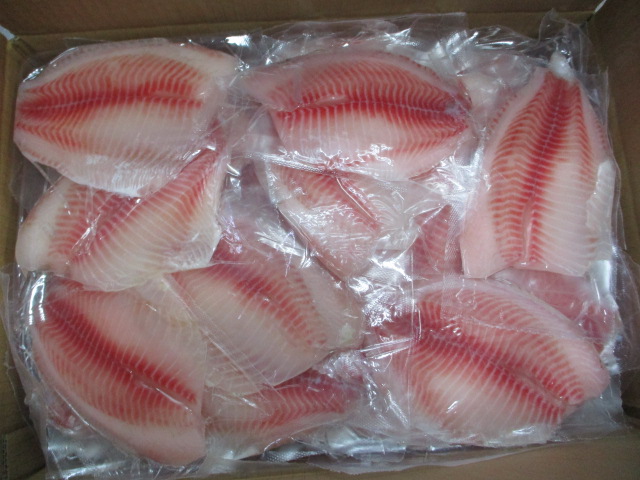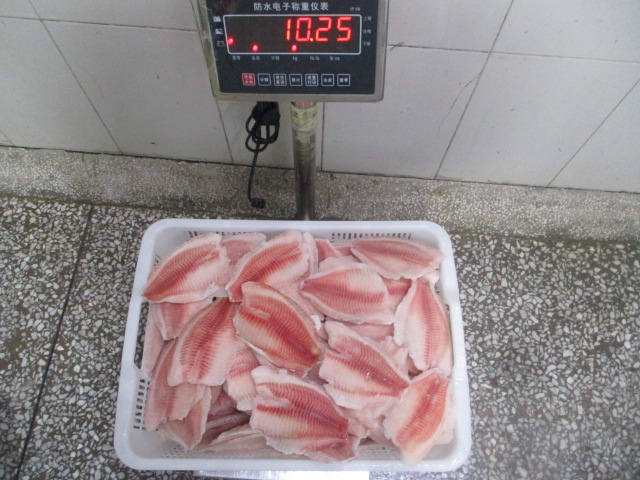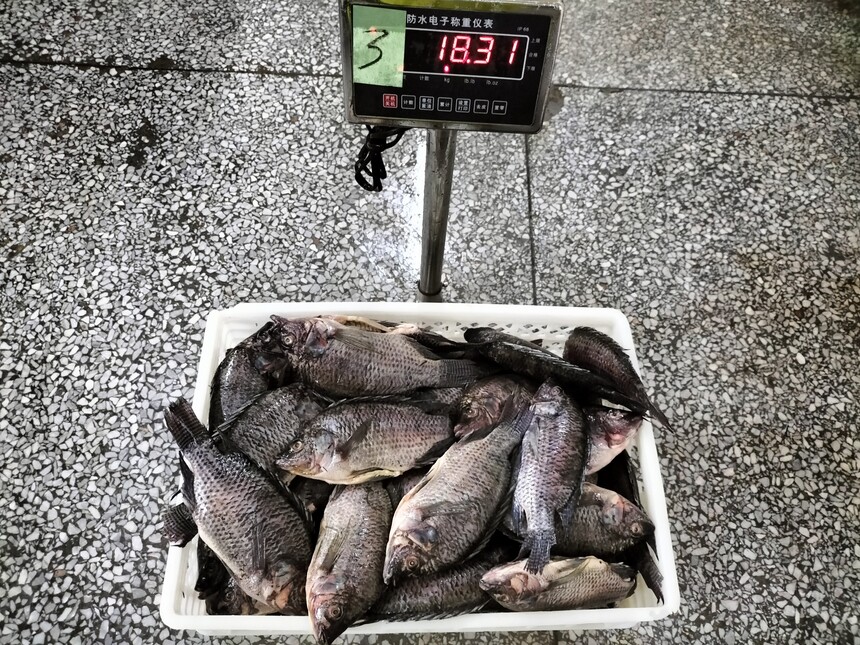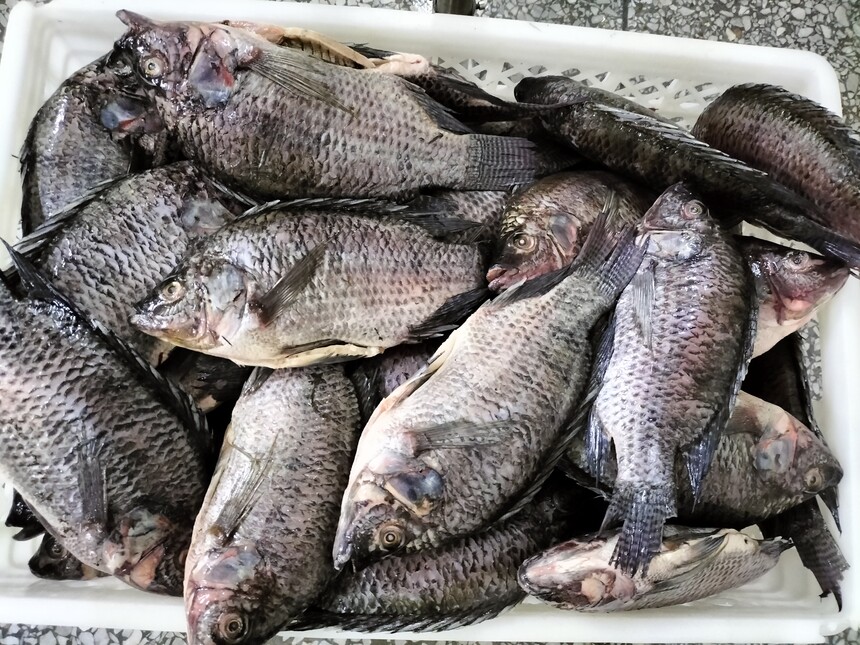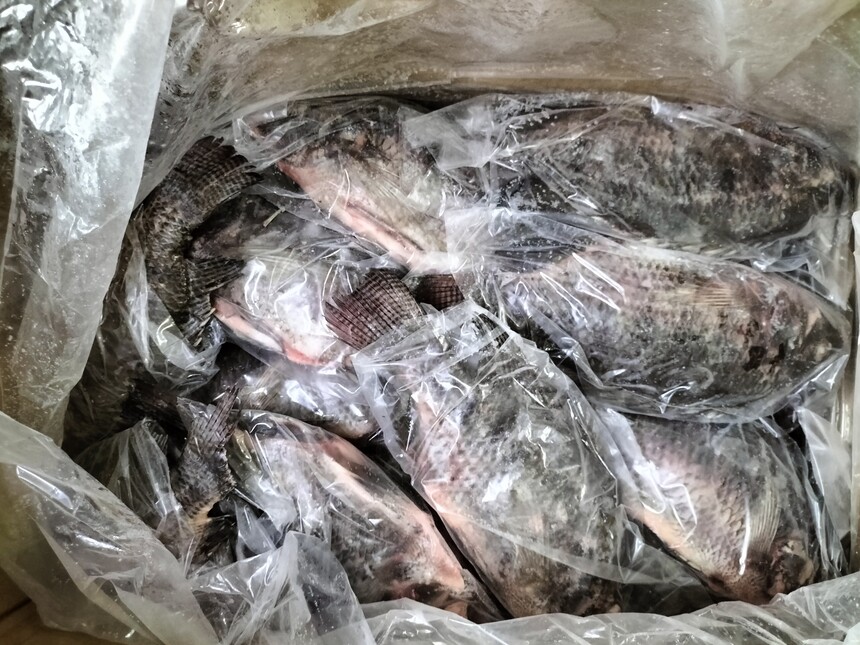|
China's Tilapia Prices Plunge Sharply From "Making 3 Yuan per Jin of Fish" to "Losing 0.7 Yuan per Jin Sold": China's Tilapia Prices Plunge Sharply—Can a 90-Day Tariff "Reprieve" Save the Industry? "I lost 70,000 yuan by raising 100,000 jin of fish!" Recently, Mr. Wang, a major tilapia farmer in Maoming, said that the tilapia market has been in a slump for two months. The purchase price has fallen below the cost line, most farmers are suffering losses, and conflicts between farmers and processing plants have intensified.
On August 28, the purchase prices of tilapia processing plants in Maoming were as follows: 2.6 yuan per jin for tilapia of 0.6–1 jin in size, and 3.6 yuan per jin for those over 1 jin in size. The pond-head purchase prices (prices paid directly at the fishpond) were 0.1 yuan per jin lower than the processing plant purchase prices; the pond-head price for tilapia transported by water tank trucks was 3.9 yuan per jin. In Hainan, the processing plant purchase prices were 2.7 yuan per jin for tilapia of 0.6–1 jin and 3.7 yuan per jin for those over 1 jin, remaining the same as the previous week.
However, during the same period last year, the tilapia market was at its best in recent years. Farmers made huge profits—those with advanced breeding technology even earned 2–3 yuan per jin of fish, and some people made nearly 1 million yuan from a 40-mu fishpond in a 9-month breeding cycle. Encouraged by this, some farmers further expanded their breeding scale, leading to a sharp increase in the demand for autumn fry that year.
Nevertheless, starting from April this year, China's tilapia industry was the first to be hit amid the U.S. reciprocal tariff war. Exports of tilapia to the U.S. declined consecutively in April and May. Specifically, in May, the export volume decreased by 2,328.93 tons month-on-month, and the export value dropped by 7.5743 million U.S. dollars. The month-on-month declines in export volume and value were 40.5% and 50.12% respectively.
After the release of the "Joint Statement on China-U.S. Economic and Trade Talks in Geneva" on May 12, as well as the outcomes of the China-U.S. talks in London (June 9–10, 2025) and Stockholm (July 28–29, 2025), China's tilapia exports to the U.S. surged in June. The export volume that month reached 14,775.4 tons, with an export value of 31.479 million yuan—marking the highest export volume in the first seven months of this year. However, the export value was lower than that of January (the second-highest export volume month this year), when the export volume was 13,447.96 tons and the export value was 35.5305 million yuan. Undoubtedly, the export unit price has been pushed down.
On August 12, China and the U.S. issued the "Joint Statement on China-U.S. Economic and Trade Talks in Stockholm." The U.S. side promised to continue adjusting the measures of imposing additional tariffs on Chinese goods (including goods from the Hong Kong Special Administrative Region and the Macao Special Administrative Region), and would continue to suspend the implementation of the 24% reciprocal tariff for another 90 days starting from August 12. In response, China would also suspend the implementation of the 24% additional tariffs on U.S. goods and relevant non-tariff countermeasures for 90 days starting from the same date. This statement alleviated the crisis of China's tilapia industry once again, and the market recovered slightly in the short term, but prices still lingered below the loss line. Due to uncertainties in the international environment and the concentrated listing of new fish, the tilapia industry is in a state of distress.
As the world's largest tilapia producer, China's tilapia industry is highly dependent on the international market, with the U.S. being its largest export destination. According to data from the General Administration of Customs of the People's Republic of China, China's tilapia export volume reached 479,200 tons in 2024, with an export value of 1.405 billion U.S. dollars—showing an overall trend of "simultaneous growth in volume and value" for the year.
In addition, journalists from Agricultural Treasure Code - Grand National Fisheries compiled data on tilapia exports over the past 9 years, showing that the annual export volume has remained above 400,000 tons. Among these years, the export volume was the highest in 2021 (492,900 tons), followed by 2024 (479,200 tons). Over the past 9 years, China's tilapia exports to the U.S. have remained between 100,000 and 150,000 tons annually, accounting for approximately 30% of the total export volume. In 2016, exports to the U.S. reached the highest level at 141,300 tons, accounting for 35.22% of China's total tilapia exports that year. Meanwhile, the export value of tilapia to the U.S. has stayed around 3 billion yuan over the past 9 years.
Facing the current sluggish tilapia market, many farmers have expressed complaints about processing plants.
"The processing plants are just trying to cut their own costs by pushing the prices this low."
"This month, the processing plants have been receiving a flood of orders every day. They're stockpiling raw materials at low prices without caring about the farmers' survival."
Some farmers, burdened with excessive fish in stockponds and extremely low selling prices, are at risk of capital chain breakage. Even in the month when fish grow the fastest, they have no choice but to stop feeding to reduce losses.
In response, processing plants also expressed helplessness, stating that they are currently "under immense pressure." Given the uncertainties surrounding U.S. orders, they can only step up efforts to explore other international markets, hoping to get through the difficult times together with farmers.
At present, although the temporary China-U.S. tariff buffer agreement has been extended by 90 days (until November 10), maintaining a tariff rate of 55%, the high tax rate still makes U.S. importers cautious. The U.S. market has weak demand for Chinese frozen tilapia fillets, and buyers are reluctant to place orders even for low-priced fillets. Data shows that in the 34th week, the prices of large-sized (7–9 ounces) "water-added" and "chemical-free" frozen tilapia fillets imported from China both dropped by 0.05 U.S. dollars per pound, while the prices of small-sized (3–7 ounces) fillets remained stable.
What lies ahead for the tilapia market? Pls contact China biggest tilapia supplier-Blue Sea Fishery for tilapia orders: Our products: frozen tilapia fillets, tilapia gutted and scaled(WGS), tilapia whole round
Blue Sea Fishery Co., Ltd. E-mail: sales@blueseafishery.cn Wechat: DORIS85789 Tel: 0086-131-5609-5220
Tilapia fish, china tilapia supplier, producer, tilapia exporter, tilapia manufacturer, seafoods supplier, tilapia gutted and scaled, tilapia fillets Frozen tilapia fillets IQF/IVP:
Frozen tilapia gutted and scaled(wgs):
|


